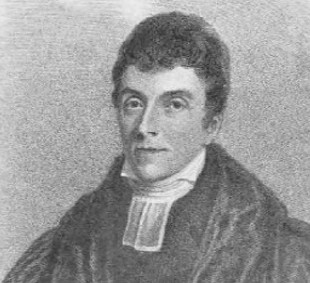|
"THE PERSIAN TRANSLATION AND HENRY MARTYN
The gifted young English scholar, Henry Martyn, after his
first few months in India, found himself conscripted by his supe-
riors in the Anglican Church establishment for a task that even
an older scholar might well have found staggering. This was the
translation of the Scriptures into Hindustani, Persian, and
Arabic, as a part of a grand scheme of Bible versions for the
East. During his short residence at Calcutta, quite near to
Serampore, scene of the labors of Carey and his Baptist brethren
in producing and printing the Bible in many tongues of India,
Martyn had become a friend and admirer of Carey and Marsh-
man, and he knew well their comprehensive program. Yet in
carrying out the parallel linguistic task, not chosen by him but
imposed upon him. Martyn's respect and affection for his older
my. brethren at Serampore saved him from such rivalry
as might easily have arisen between them, had both parties been
men inspired by no higher motives than intellectual ambition.
Two remarkable Oriental scholars were from the first placed
at Martyn's disposal as teachers and helpers, Mirza Fitrat for
Hindustani and Nathanael Sabat for Arabic and Persian. Just as
the Sabat-Martyn Arabic New Testament leaned too far towards
the "high" or Koranic style to be acceptable to readers other
than Mosl_m scholars (see on Arabic Versions, p. 53), so
Martyn's earlier Persian New Testament, made with
Sabat's
help, was marred by too much Arabic in its vocabulary and
idioms. To remedy this fault Martyn determined to spend six
months or more in Persia, where he
should have the benefit of
Persian literati in their own land. Such was in fact the
scholar,
Mirza Saiyad Ali Khan of Shiraz, who became his adviser in the
revision of the whole New Testament.
Speaking in his diary of the total differences between the
styles
adopted in his earlier and later versions, Martyn writes: "The
king (of Persia) has signified that it is his wish that as little
Arabic as possible may be employed in the papers presented to
him. So that simple Persian is likely to become more and more
fashionable. This is a change favourable certainly to our glorious
cause. To the poor the Gospel
will be preached. . . . The
Gospel of St. John is likely to be the simplest thing imaginable;
and I dare say the pedantic Arab will turn up his nose at it; but
what the men of Shiraz approve, who can gainsay?"
All Martyn's journey of ten days from his landing at Bushire
to his arrival (June, 1811) at Shiraz, that city of ancient Persian
culture, was a torture of alternative external tropic heat and moun-
tain cold, and constant internal fevers. On his arrival he began
the enjoyment of boundless Oriental hospitality from a host
famed for wealth and culture. Yet Henry Martyn calls it a six
months' exile and writes: "I am often tempted to get away
from
this prison . . . but by placing myself twenty years on in time,
I say, why could I not stay at Shiraz long enough to get a New
Testament done there, even if I have been detained there on that
account three to six years? What work of equal importance can
ever come from me?"
The six months did stretch out into nearly a year, before
the
work was done and he could leave for England. Another six
months, however, separated the traveler, not from England, as
it turned out, but from the Turkish town of Tokat, where
Martyn's fever-racked body at last found rest in the grave (Oc-
tober, 1812), and from that heavenly goal where his spirit, vic-
torious over all earthly trials, joined the
Christ whose words he
had given to the great race of Persians.
After the lapse of more than a century it is that Shiraz
version
which remains the basis of all later revisions of the Persian New
Testament.
It seems rather odd that the first translation
of any part of the
Bible into Persian should have been made and published nearly
three centuries before Martyn's day, by a Jew for his fellow-Jews
of Persia. It is the Pentateuch, printed in Hebrew letters, in a
Polyglot issued in 1546 at Constantinople by the famous Soncino
press, alongside three other languages--Hebrew,
Chaldee and
Arabic. This
furnished the text for the Persian Pentateuch
printed a century later in the London Polyglot, though the usual
Persian character is here substituted for the Hebrew letters used
by the Jewish editor."--1000 Tongues, 1939 [Info
only]
|



